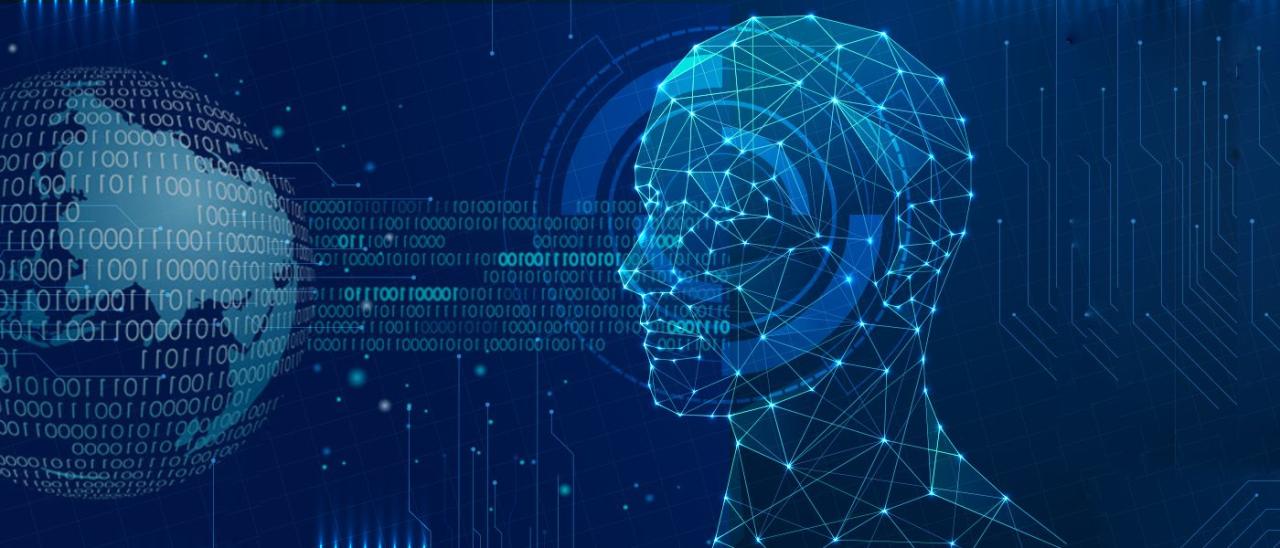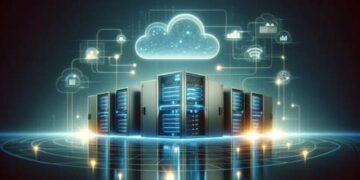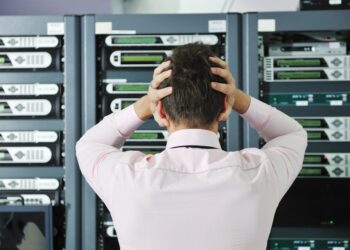The Imperative for Intelligence in Modern Data Infrastructure
The backbone of the digital world—the data center—is simultaneously one of its most critical and most energy-intensive components.
As global reliance on cloud services, streaming, artificial intelligence (AI) models, and ubiquitous connectivity skyrockets, the sheer volume of data being processed demands an ever-increasing consumption of energy and resources.
The pressure is mounting on operators to find radical new ways to improve efficiency, reduce operational costs (OpEx), and meet stringent sustainability targets. Enter Artificial Intelligence (AI): not just a workload running inside the data center, but the most powerful tool for optimizing its very operation.
This exhaustive article will explore in depth how AI and Machine Learning (ML) are fundamentally transforming data center management, moving operations from reactive and rule-based systems to predictive, self-optimizing, and hyper-efficient infrastructure.
We will detail the specific applications, the quantifiable benefits, and the future trajectory of intelligent automation in the global data infrastructure landscape, ultimately demonstrating why AI is the singular key to unlock the next generation of eco-friendly, high-performance computing.
I. AI’s Dominance in Power Usage Effectiveness (PUE) Optimization
The industry benchmark for data center efficiency is the Power Usage Effectiveness (PUE) metric, calculated by dividing the total facility energy consumption by the energy used solely by the IT equipment. A perfect PUE is 1.0. The vast majority of the “extra” energy (PUE>1.0) is consumed by non-IT overheads, primarily cooling and power delivery losses. AI is uniquely positioned to drive PUE towards its theoretical minimum.
A. Granular Power Monitoring and Load Balancing
Traditional power distribution is often statically allocated based on peak expected loads, leading to over-provisioning and wasted capacity. AI changes this by creating a real-time, dynamic map of energy flow.
A. Predictive Load Shifting
ML algorithms analyze historical usage and upcoming workload forecasts (e.g., scheduled backups, peak user traffic) to predict power demand changes seconds or minutes ahead of time, allowing for preemptive load balancing across power distribution units (PDUs) and uninterruptible power supplies (UPS).
B. Minimizing Conversion Losses
AI fine-tunes the output voltage and frequency of power conditioning equipment (like rectifiers and inverters) to operate at their most efficient point based on the instantaneous load, thereby minimizing the energy wasted during power conversion processes.
C. Optimizing UPS Efficiency
UPS systems typically run in a less efficient “double-conversion” mode for maximum protection. AI can accurately assess grid stability in real-time and switch the UPS to a more efficient “eco-mode” (or standby mode) when conditions permit, significantly reducing power loss without compromising fault tolerance.
B. Dynamic Cooling System Optimization
Cooling constitutes the single largest non-IT energy expenditure in a data center. AI’s application in HVAC (Heating, Ventilation, and Air Conditioning) management is perhaps its most profound contribution to PUE reduction.
A. Chiller Plant Optimization
AI models ingest vast streams of data, including external ambient air temperature, humidity, chiller performance curves, IT load levels, and water temperatures. The algorithm then predicts the optimal settings for flow rates, condenser temperatures, and compressor speeds, often adjusting settings every five minutes or less. Google famously reported AI reducing their data center cooling energy by 40% using this methodology.
B. Airflow Management and Containment
Sensors measure air pressure and temperature differentials across hot and cold aisles. AI dynamically adjusts the speed of CRAC/CRAH (Computer Room Air Conditioner/Handler) units and floor tile perforated opening percentages to deliver the minimum required airflow needed to maintain temperature thresholds, eliminating energy wasted by over-pressurizing the facility.
C. Free Cooling Maximization
In regions utilizing free cooling (using outside air or water to cool the facility), AI models meticulously calculate the dew point and potential for condensation versus the energy saved by avoiding chillers. This allows operators to safely extend the operational window for free cooling hours, maximizing savings while preventing damaging humidity events.
II. Enhancing Reliability through Predictive Maintenance
Downtime is the nemesis of data centers, resulting in massive financial losses and service disruption. Traditional maintenance is either reactive (after a failure) or time-based (scheduled checks), both of which are inefficient and suboptimal. AI introduces predictive maintenance (PdM), turning the vast streams of sensor data into actionable foresight.
A. Early Anomaly Detection in IT Hardware
Server failures, hard drive degradation, and memory errors don’t happen instantly; they usually exhibit subtle behavioral changes first.
- A. Hard Drive Failure Prediction: ML models analyze drive SMART data (Self-Monitoring, Analysis, and Reporting Technology), latency spikes, and error logs, identifying patterns characteristic of impending failure days or even weeks before catastrophic shutdown. This allows for hot-swapping the component during low-traffic periods, minimizing service impact.
- B. CPU/GPU Thermal Throttling Forewarning: AI tracks not just current temperature but the rate of temperature change and the correlation with the computational load. If a specific server is showing an unusually fast temperature rise under a normal load, the AI flags a potential fan failure, dust accumulation, or thermal paste degradation, enabling maintenance to inspect the unit preemptively.
- C. RAM Error Pattern Analysis: Advanced error-correcting code (ECC) memory logs small, correctable errors. AI aggregates these logs to predict when the uncorrectable error threshold will be crossed, scheduling the component replacement before data integrity is compromised.
B. Predictive Failure in Mechanical and Electrical Infrastructure
AI’s ability to monitor acoustic signatures, vibration patterns, and electrical characteristics is crucial for non-IT equipment.
A. Vibration Analysis of Motors and Pumps
Sensors attached to motors in chillers, pumps, and fans feed data to ML models trained on normal vibration patterns. Deviation in frequency or amplitude indicates bearing wear, shaft misalignment, or impeller damage, allowing maintenance teams to intervene before a catastrophic (and costly) mechanical failure.
B. Transformer and Breaker Health Monitoring
AI monitors the partial discharge, temperature, and harmonic distortion in high-voltage equipment like transformers and switchgear. Detecting minor electrical anomalies early prevents major power distribution failure that could bring down an entire facility.
C. Generator Performance Assessment
Diesel or natural gas backup generators are rarely used but must work instantly during an outage. AI monitors fuel quality, battery health, and test run efficiency metrics to ensure the generator’s readiness is always within tolerance.
 III. Maximizing IT Infrastructure and Resource Utilization
III. Maximizing IT Infrastructure and Resource Utilization
Efficiency isn’t just about saving power; it’s also about extracting maximum performance from the installed IT hardware. This is where AI-driven resource orchestration shines, directly translating into better ROI (Return on Investment).
A. Dynamic Workload Placement and Migration
Virtualization and cloud infrastructure rely on efficient placement of workloads (Virtual Machines or Containers). AI optimizes this in real-time.
A. Thermal-Aware Scheduling
Instead of placing workloads randomly, AI selects the optimal server rack based on its current thermal conditions and cooling capacity. High-density, high-heat workloads are dynamically moved to racks with superior cooling, preventing localized hot spots and maintaining performance.
B. Resource Contention Avoidance
ML predicts which combinations of workloads are likely to compete for shared resources (e.g., I/O bandwidth, memory bandwidth). It then schedules workloads onto different physical hosts to ensure minimal latency and jitter, providing better Quality of Service (QoS) for tenants.
C. “Right-Sizing” Resource Allocation
AI continuously analyzes the actual consumption of CPU, RAM, and disk I/O for applications. It then recommends or automatically implements “right-sizing” of virtual resources, reclaiming underutilized capacity and reducing the licensing costs associated with over-provisioned VMs.
B. Automated Decommissioning and Capacity Planning
The lifecycle management of thousands of servers is complex. AI brings clarity and precision to these long-term tasks.
A. End-of-Life Forecasting
By tracking performance degradation, failure rates, and energy consumption against purchase price and depreciation, AI provides precise forecasts on when a server or cluster reaches an economic end-of-life, allowing for optimal replacement scheduling.
B. Just-in-Time Capacity Provisioning
Rather than relying on static buffer percentages, AI models use advanced forecasting to predict the exact time a particular rack or facility will run out of power, cooling, or space capacity. This enables procurement and build-out to be executed just in time, minimizing the capital tied up in unused infrastructure.
C. Energy-Proportional Computing
AI identifies periods of extremely low utilization (e.g., weekend nights). It can then safely enter certain servers or nodes into a deep sleep or power-off state, only awakening them when load levels cross a predetermined, efficient threshold.
IV. The Role of AI in Sustainable and Regulatory Compliance
Data centers face increasing public scrutiny and governmental regulation regarding their environmental footprint. AI provides the monitoring and optimization tools necessary to not only comply but to excel in sustainability.
A. Water Usage Effectiveness (WUE) Reduction
While PUE addresses power, Water Usage Effectiveness (WUE) measures the amount of water used for cooling per unit of IT energy. AI is a critical tool for WUE reduction.
A. Optimizing Evaporative Cooling
In systems that use water evaporation for cooling (cooling towers), AI models balance the trade-off between water consumption and power consumption. It determines the highest permissible cycles of concentration for the water, which reduces blowdown (waste water) while avoiding scale formation that degrades chiller efficiency.
B. Predictive Leak Detection
AI analyzes precise flow meter data for sudden or subtle unexplained drops or spikes in water levels across closed loops, identifying leaks early and minimizing water loss.
B. Carbon Footprint and Renewable Energy Integration
AI is essential for data centers committed to running on 100% renewable energy, especially when the renewable source (solar, wind) is intermittent.
A. Carbon-Aware Workload Scheduling
In a concept known as “carbon-aware computing,” AI dynamically shifts non-time-critical workloads (e.g., batch processing, model training) to run during hours when the local electrical grid is being supplied by the highest proportion of renewable energy.
B. Optimizing On-Site Storage
For facilities with battery storage or microgrids, AI predicts the optimal time to charge the batteries (when renewable energy is cheap or abundant) and the optimal time to discharge (when grid power is expensive or carbon-intensive), maximizing both financial savings and green energy usage.
 V. Overcoming Implementation Challenges and the Future Outlook
V. Overcoming Implementation Challenges and the Future Outlook
Adopting AI for data center management is not without its hurdles, but the industry is rapidly developing solutions that pave the way for a fully autonomous infrastructure.
A. Data Integrity and Sensor Interoperability
The effectiveness of any AI model is limited by the quality of the data it receives. Early challenges centered on integrating thousands of disparate sensors (from different vendors and generations) and ensuring data streams were clean, accurate, and properly timestamped.
A. Data Normalization Platforms
Developing middleware that standardizes data from various protocols (like Modbus, BACnet, SNMP) into a unified time-series database is a necessary foundation.
B. Sensor Calibration Management
AI itself can monitor the consistency of readings between adjacent sensors and flag when a sensor’s readings drift out of expected tolerance, initiating a calibration check.
B. Explainable AI (XAI) and Trust
Operators are naturally hesitant to grant an opaque “black box” algorithm control over mission-critical infrastructure. The future of data center AI hinges on Explainable AI (XAI).
A. Decision Transparency
XAI provides a clear log and justification for every automated decision (e.g., “The chiller was set to 40∘F because the predicted IT load at 3:00 PM required this setting to maintain PUE below 1.3, based on the current 85∘F ambient temperature”).
B. Human-in-the-Loop Controls
While AI drives optimization, human operators retain the ability to review and override automated decisions if unforeseen external factors (e.g., a utility company alert, or a physical security event) necessitate manual intervention.
C. Edge Computing and Distributed Intelligence
As data centers evolve into vast, distributed networks incorporating Edge Computing, AI will follow.
A. Localized Optimization
Smaller AI models will run directly on compute nodes at the Edge, performing real-time, low-latency optimization of local power and cooling without needing to communicate with a central cloud, increasing response speed and resilience.
B. Federated Learning for Best Practices
Data from thousands of globally distributed data centers can be used to train a global optimization model using federated learning, sharing performance insights without compromising the privacy or security of individual facility data.
Conclusion
The application of Artificial Intelligence within data center operations is moving beyond simple pilot projects; it is becoming a mandatory competitive differentiator. The exponential demands for computing power, coupled with the urgent need for environmental sustainability, have rendered static, human-managed infrastructure obsolete.
AI drives efficiency across the entire spectrum of operations—from reducing the PUE by intelligently regulating cooling systems and minimizing power conversion losses, to ensuring reliability through predictive maintenance of every pump, cable, and chip. Furthermore, it allows for sophisticated resource utilization and crucial adherence to carbon-aware scheduling and sustainability goals.
In essence, AI is paving the path toward the “Self-Driving Data Center”—a facility that continuously monitors, learns, adapts, and optimizes itself in real-time, achieving levels of operational and energy efficiency that were once considered unattainable. For the future of the digital economy, this evolution is not merely beneficial; it is absolutely existential.







